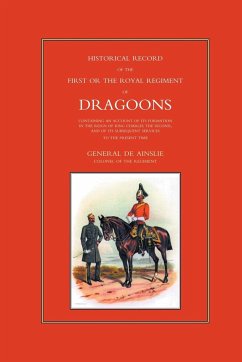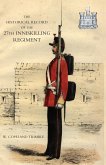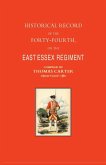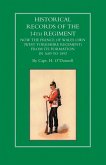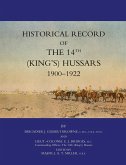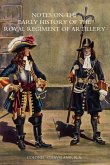The regiment originated in the Troops of Horse engaged in the defence of Tangier from 1661 and was at first designated the Tangier Horse. In 1683 it was redesignated The King's Own Royal Regiment of Dragoons and a few years later the 'King's Own' was dropped and from 1690 the title became the Royal Regiment of Dragoons. In 1751 the designation changed again, to the 1st (Royal) Dragoons and in May 1961 it became The Royal Dragoons (1st Dragoons). Finally, in 1969 it joined the Household Cavalry by amalgamating with the Royal Horse Guards (The Blues) and becoming The Blues and Royals. This history gives an account of the Regiment from 1661 to October 1886 during which time it served with distinction in many campaigns from Tangier to the Crimea and Egypt (1884-85). At Waterloo the Regiment captured one of the two French Eagles taken that day, the other one was taken by the 2nd Dragoons, The Royal Scots Greys. The Regiment also took part in the charge of the Heavy Brigade at Balaklava, a very brief but very successful affair though less well known than the charge of the Light Brigade. Although the Royals did not serve in India nor in the East they saw plenty of action at home (the Monmouth Rebellion, the Boyne, the Jacobites) and on the continent - the Netherlands, Spain, Germany and the Peninsula; ten battle honours had been awarded by the time this account comes to a close. To finish there are biographical notes of all twenty Colonels of the Regiment followed by a most comprehensive 45-page index.

